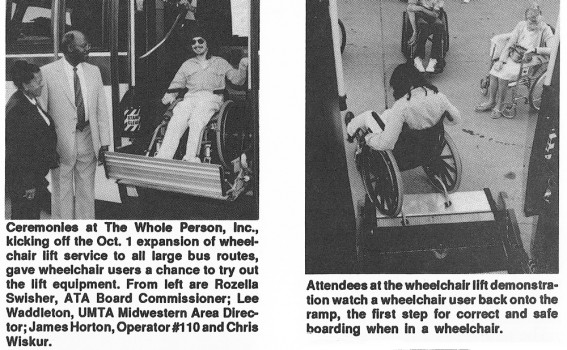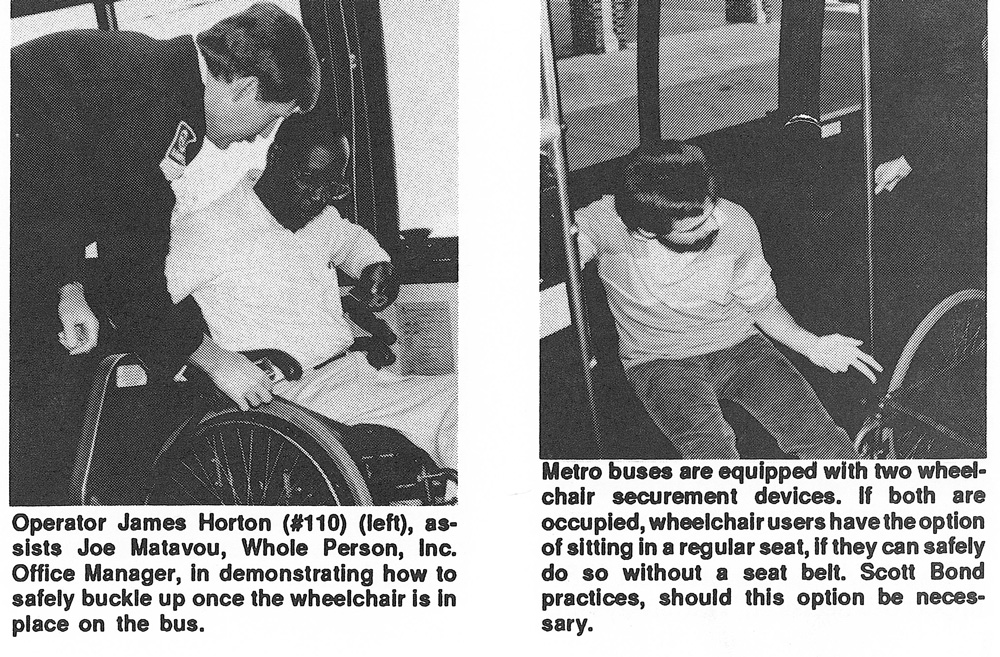25 Years Later: Looking Back at the Americans with Disabilities Act

By the time the American’s with Disabilities Act (ADA) was signed 25 years ago this week, KCATA was already leading the way to make its buses more accessible to riders with disabilities.
While other government agencies struggled to meet the mandates of the law that changed the world for millions of Americans with disabilities, about a third of the KCATA’s buses complied from the first day.
Last year, KCATA buses provided more than 20,000 wheelchair trips to serve riders with disabilities, up from about 14,000 trips provided in 2013.
More than 7,300 KCATA ID cards were issued to riders with disabilities within the last three years; the card allows KCATA customers with disabilities to ride at half the cost.
Also in 2014, over 222,000 riders with disabilities who are unable to independently travel on public buses used KCATA’s Share-A-Fare Paratransit service.
Enacted in 1990 with hearty support from U.S. Sen. Bob Dole of Kansas, the law prohibited discrimination against people with disabilities.
It ensured they would have equal access to employment, public accommodations, transportation, government services and telecommunications.
Dole, who never fully regained use of his right arm after he was wounded in in World War II, said at the time that the bill was a “just and fair” measure that would send the message that prejudice against the people with disabilities would not be tolerated any longer.
While the law was intended to give people with disabilities the ability join the flow of mainstream life, the heart and soul of the bill was about transportation.
After President George H.W. Bush signed the bill on July 26, 1990, the only part of the law that started immediately regulated public transportation.
Sounding a theme similar to the KCATA’s mission today, Dole said the bill would guarantee the access many people need to get to work and economic opportunity.
Four years earlier – without a legal mandate – the KCATA recognized the needs of its riders with disabilities when it bought about 30 lift-equipped buses.
Two years later, the KCATA acquired 69 more buses fitted with lifts. When Congress passed the disabilities law, about a third of the KCATA’s bus fleet – and all of its large bus routes -- was already accessible to riders with disabilities.
In October 1989, Kansas City celebrated the accomplishment with an event to demonstrate the ease of boarding a bus using a wheelchair.
The KCATA offered free rides that month for anyone using a wheelchair to celebrate National Disability Employment and Awareness Month.
Now, all of Kansas City’s buses are accessible to riders with disabilities -- as is just about every bus elsewhere in the country.

Photos from Oct. 1989 KCATA employee newsletter.